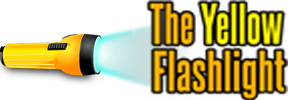Designing logo families helps brands stay clear and recognizable on tiny displays. This guide explains how to build stacked, initials, and icon-only variants that scale, maintain hierarchy, and support consistent small-screen branding across apps, social, and UI placements.
Principles of responsive logo design

graphic design for tiny screens begins with ruthless simplification. Strip fine details. Keep only distinctive shapes that read at a tap. A 2024 study found 89% of people recall a logo, and 69% will answer calls from a known mark.
logos need a clear hierarchy. Define a primary mark, a stacked compact version, initials, and an icon-only mark. Use a small
- AI agents and live previews to test legibility.
Small-screen branding basics
Maintain generous safe zones. Contrast and stroke weight matter most at small sizes. Create design tokens for sizes, spacing, and color to enforce consistency. Iterate on devices often.
Build stacked and initials variants with clear rules. Label when to swap to each mark. That practice makes logo variants predictable across apps, avatars, and favicons.
visual identity work benefits from a vector-first approach. Export SVGs and test on low-power devices. Keep accessibility in mind and meet contrast requirements.
The practical workflow uses simple tools. creative process notes, a tiny asset library, and exported PNG fallbacks prevent surprises. Use responsive design best practices for device testing and token setup.
branding strategy, digital artwork, design tools, and photo booth templates follow the same scale rules. Thoughtful small-screen branding protects recognition while keeping the visual system agile.
Building stacked and initials systems — small-screen branding
graphic design for mobile needs rules, not random tweaks. A quick fact helps: in 2024, 75% of consumers judge brand credibility from logo design. That makes responsive logo design urgent for apps and tiny interfaces.
When to use stacked
Use stacked marks in tall spaces and launch screens. They excel where horizontal wordmarks compress poorly. This choice improves small-screen branding and creates coherent logo variants for tight layouts.
Alignment and balance
Apply optical centering and tweak baseline and tracking. Test on different pixel densities and text sizes. Keep the AI agents workflow simple when exporting assets for handoff.
Logo lockups
Build a few locked compositions. Avoid infinite permutations. These presets make implementation easier for teams handling responsive logo design.
Crafting initials and monograms
Start with letterform reduction. Treat letters as shapes, not just type. Add a custom stroke or junction to keep marks unique in tiny sizes. This step protects your visual identity across avatars.
Define square, circular, and rounded containers. Set consistent padding rules for icons and avatars. This supports strong small-screen branding.
Deliverables
- SVG master files with named artboards for each variant.
- Export presets for PNG and WebP at common mobile sizes and retina scales.
- Usage guidance showing dos and donts for stacked and initials variants.
Include notes about the creative process, export automation with common design tools, and references to related posts like responsive design best practices. Good deliverables streamline logo variants and final QA for responsive logo design. Keep asset names clear to protect branding strategy and the look of your digital artwork. Also add simple avatar templates aligned with photo booth templates rules to help clients test social previews.
Testing and deployment of logo variants for responsive logo design

graphic design work needs real checks on devices. Start with real-device previews across phones, tablets, and compact wearables. Test the same screens in light and dark OS themes. This shows how a stacked mark, initials, or icon-only option reads.
Performance and small-screen branding assets
Export SVGs for scale and use small PNG or WebP for legacy contexts. Serve the most compact file where possible. Optimized exports reduce load times and protect user experience. Consider icon fonts and sprite systems only when they help caching. Prefer individual, optimised icons for fine control.
Contrast and legibility checks are essential. Verify marks on photos, gradients, and dark surfaces. Use initials and icon-only variants where needed. Observe how each logo variants behaves at tiny sizes.
- AI agents can automate device screenshots for quicker QA.
- logos sets should include naming rules and code snippets for front-end teams.
Provide a concise style guide with examples for app icons, favicons, avatars, and social thumbnails. Set review milestones to measure performance in real user contexts. For practical tips, see our responsive design best practices guide.
Final words
A deliberate logo family keeps brand identity intact across tiny screens. By defining clear variants, testing across devices, and supplying optimized assets and guidance, teams ensure consistent recognition. Use these methods to plan, craft, and deploy stacked, initials, and icon-only marks that work when space and attention are limited.
